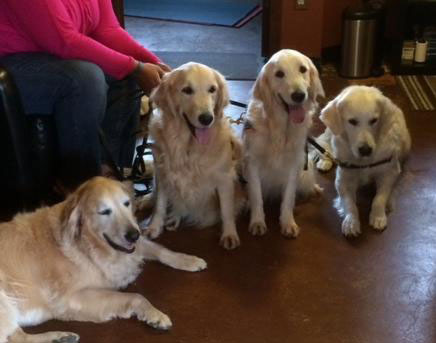Food Therapy
Poor nutrition is a leading contributor to ill health, both in humans and our pets. It is frustrating and unfortunate that eating healthy (whole foods) can be cost prohibitive for many people, especially when considering offering a more natural diet for their pets. The dry kibble that is so highly engrained in our minds as something that is good to feed our pets should no longer be considered the ideal. We all realize that processed foods have less nutritive value. These foods also contain preservatives and other inappropriate ingredients that are not necessarily healthy for our pets. Marketing can be a deceptive tool. Pet food companies will have pictures containing vegetables, meats and grains, giving the impression that that particular bag contains all of these whole food ingredients. We need to consider what is required in order to get the food from the whole form, into a kibble form. Processing – and lots of it. There is such a high heat index required to go from one form to the other which leads to blanching of nutrients and alterations in protein structures. Synthetic vitamins are then added to the diet to replace the natural forms lost during the processing (which are poorly utilized).
Trying to switch the thought process of “it is wrong to feed animals people food” is challenging. In veterinary school the processed diet is recommended. Pet food companies travel to veterinary schools to speak to the students and promote their products. As students, there is so much other information to absorb that nutrition often takes the back burner. This is sad and unfortunate, as again, poor nutrition leads to poor health. Veterinarians that practice medicine from a more holistic approach and are recommending a more natural-based diet (raw or home cooked) are witnessing better overall health and, at times, resolution of syndromes which otherwise would require medications. For veterinarians that promote this form of proper nutrition, the consensus seems to be from best to worst: Raw, followed by dehydrated raw, home prepared, canned then kibble.
Now for as much sense as this all may sound, one has to be practical as well. Some people are not comfortable feeding raw or it may be cost prohibitive. If this is the case, a dehydrated raw or home prepared diet should be considered. It can be quite rewarding to cook for your animals and once you get a system down, it will not be such a burden. We just need to ensure that we are formulating the diets correctly, offering the proper vitamins, minerals and supplements. It is highly recommended that a veterinarian evaluate the diet in order to determine if the proper additives are being incorporated; otherwise, we are defeating the purpose of our original intention.
Q: How is TCVM incorporated into whole food therapy?
TCVM theory supports that foods have specific ‘energetic’ properties. Some food sources may have warming properties, while others may have cooling effects. When a proper pattern diagnosis has been determined for your pet, various foods can be selected that assist the body in helping it heal itself. If your pet has a condition leading to excess heat in the body, then proteins, vegetables and fruits with cooling properties would be recommended and vice versa. If completely changing your pet’s diet is not an option, simply adding in various whole foods could be of benefit as well.
Q: What does a nutritional consultation entail?
Dr. Januszewski will help guide you in making the overwhelming decision of what type of diet to offer your pet in order to achieve the optimal goal of health and longevity. The choices can be overwhelming to consider but include types of food ranging from raw, dehydrated raw, home prepared, canned and kibble. We also take into account your pet’s pattern diagnosis from an eastern medicine perspective, which can help guide us in determining the best protein sources to incorporate, based on its energetic (cooling, neutral or warm). This one factor can really make a profound difference in your pet’s response to the type of food they are being offered. We can use nutritional response testing (a method of applied kinesiology) as a tool to determine if any specific food sources should be avoided when you are making your pet’s diet selection. If a home-prepared diet is preferred, we sometimes refer clients to a boarded veterinary nutritionist as they have the specific software to specifically calculate for any deficiencies or excesses in nutrient content.


